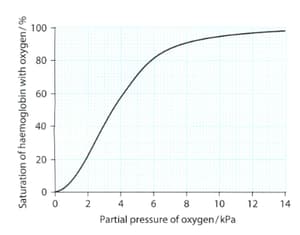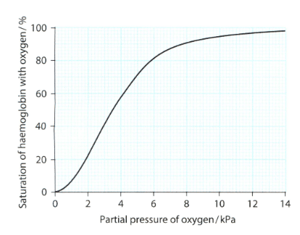Assuming that you have 2.5 1013 red blood cells in your body, that the average life of a red blood cell is 120 days, and that the total number of red blood cells remains constant, calculate how many new red blood cells must be made, on average, in your bone marrow each day.

Important Questions on Transport in Mammals
Whether the following function could or could not be carried out by red blood cells. Briefly Justify your answer.
Protein synthesis
Whether the following function could or could not be carried out by red blood cells. Briefly Justify your answer.
Lipid synthesis
Whether the following function could or could not be carried out by red blood cells. Briefly Justify your answer.
Cell Division
Whether the following function could or could not be carried out by red blood cells. Briefly Justify your answer.
Active transport
Use the given dissociation curve in the given figure and answer the question:
The partial pressure of oxygen in the alveoli of the lungs is about 12kPa. What is the percentage saturation of haemoglobin in the capillaries in the lungs?

Use the given figure and answer the question:

The partial pressure of oxygen in an actively respiring muscle is about 2 KPa. What is the percentage saturation of haemoglobin in the capillaries of such a muscle?
